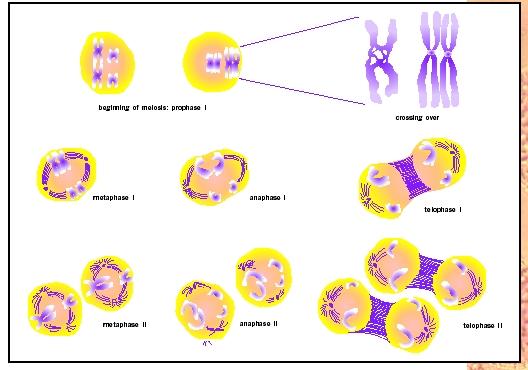We started off this week with Martin Luther King Jr. Day, so we didn't have school on Monday. On Tuesday, we reviewed for our quiz we were going to have the next day. We remembered that DNA is a double helix. Each helix is one sugar backbone. We reviewed what chromatins, chromatids and and chromosomes look like. We thought back to when we learned that in Early Prophase, the spindle fibers start to form. The spindle fibers are what connect to the kineticore during Prometaphase. They straighten the chromosomes out and pull them apart towards opposite poles of the cell.
Also in Promataphase, the DNA starts winding up and the centrioles become visible. The last thing we reviewed that day was what autosomes were. Autosomes are:
Autosomes- All of the chromosomes that aren't sex chromosomes.
We then had our quiz about Mitosis.
This week we also started learning about Meiosis. Meiosis is when a cell reproduces into four new cells, which is different from Mitosis. Mitosis is when it splits into two. The phases in Meiosis are:
1. Prophase I
2. Metaphase I
3. Anaphase I
4. Telophase I
5. Prophase II
6. Metaphase II
7. Anaphase II
8. Telophase II
There are also Diploid Cell and Gamete, but these aren't a part of part of Meiosis.
Here is what happens in each phase:
Diploid- Chromosomes produce sister chromatids.
Prophase I- Dyad pairs allign to tetrads.
Metaphase I- Spindle fibers attatch to the tetrads at the kinetocore, the spindle fibers move the tetrads to the equator.
Anaphase I- Sister chromosomes move to the opposite sides of the cell.
Telophase I- A cleavage furrow forms to begin cytokinesis. They're soon going to form into daughter cells.
Prophase II- Spindle formation begins and centrosomes begin to move to the opposite sides of the cell.
Metaphase II- Spindle fibers align the chromosomes to the center.
Anaphase II- Chromatids seperate and begin moving to opposite sides.
Telophase II- Cleavage furrow forms to begin cytokinesis.
Gamete- Nuclear envelope form. Meiosis has produced four daughter cells.
In meiosis, we make sex cells which are also called gametes.
Lastly, this week we looked at autosomes and their different sizes. We learned that there are two. One is from Mom and one is from Dad. We learned that Mom's have two X chromosomes and Dad's have one Y and one X.
In karyotypes, you can tell the gender of the baby, if it has Down Syndrome and the amount of chromosomes it has.
That is what I learned in science this week.
